Do carbs make you fat? 3 experts answer the question
To lose weight should we shun carbs, limit them or choose only the brown varieties? We asked three leading weight loss experts for their opinions and got three very different answers
Firstly, I want to be clear about terminology â€" when people talk about ‘carbs’, they are referring to the starchy variety found in grains, beans and roots we need to cook to eat, like potatoes and parsnips. But all foods from the plant kingdom are mainly carbohydrates, so cutting out or reducing the starches still leaves us with an abundant source from vegetables, nuts, seeds and fruit.
Human physiology is not as simplistic as calories in/calories burned. Starches may be calorifically low, but they affect metabolism and fat storage in much more sophisticated ways as our body is designed for continual change and adaptation, they can:
·      Upset the balance of ‘good bacteria’ in the gut, of which low levels are associated with higher weight increasing (and bloating) stress, inflammation and poor appetite regulation.
·      Increase the production of insulin, the hormone that takes sugar from the bloodstream into cells and signals to the body to store fat.
Human digestive tracts are short to direct energy to our big brains and animals who digest such foods easily have long digestive tracts and can chew all day. Early farmers who started eating these foods (only in any quantity 10,000 years ago) cooked them over long periods or processed by fermenting (like sourdough) or soaking in an acidifier (like Bircher muesli) to break down these fibres. At least choosing traditional over modern or raw grains and beans can help.
Starches may be calorifically low, but they affect metabolism and fat storage
Cultivated versions of grains, beans and root vegetables are bred to be much starchier than their wild counterparts; early farmers worked extremely hard, more easily metabolising these high sugar sources. It is well documented that modern man/woman has not only higher weight averages, but also a less healthy, higher stored fat to lean muscle mass ratio.
With weight loss clients, I always suggest cutting out entirely and replacing with as many vegetables as possible. This also helps to temper any insulin rises that can be feeding into other sugar source cravings, so helps people to get on top of sugar urges, addictions and late night bingeing that can come from related serotonin (mood neurotransmitter) irregularities. These can themselves cause a biochemical ‘need’ for quick-fix sugar consumption and the cycle continues.
Human physiology is not as simplistic as calories in/calories burned.
From there, we have a baseline from which to intercept the craving cycles that are such a key factor of weight gain. Quality protein with meals creates a foundation for good blood sugar balance and with carb energy from plenty of vegetables, nuts, seeds and some fruit.
For some cutting out starchy carbs entirely can see a reduction in energy, so best choices to add in are; sweet potatoes, rye bread (especially sourdough), brown Basmati rice, buckwheat, barley, quinoa and some well-prepared beans (see below). I work with clients â€" as outlined in my book The De-Stress Effect: Rebalance Your Body’s Systems for Vibrant Health and Happiness
A typical day’s healthy eating for weight loss in Charlotte’s view:Â
Lunch: Big, hearty stew with optional slow-cooked beans, greens and free-range meat of your choice if applicable. Include plenty of big green leaves for healthiest carbs, like kale and cavolo nero, plenty of potassium-rich celery and warming spices like cumin, coriander, cinnamon and chilli. This is an easy and filling meal to match in batches, freeze and use as a fantastic meal for weight loss.
Dinner: Easy stir-fry with broccoli, asparagus, carrots, leeks, onions and any other veg you fancy â€" flavour with garlic, ginger, tamari (gluten-free soy sauce) and Chinese five spice with protein from chicken, prawns, tofu or cashews.
Connect with Charlotte here
Carbohydrates are often demonised by those wanting to lose weight. In truth, starchy carbohydrates (potato, rice, pasta, cereal, bread, and chapatti, for example) are actually a low calorie, vitamin rich food group. Starchy carbohydrates are often high in fibre and low in fat. Carbohydrate is converted into glucose to be transported around our body. This glucose is stored as glycogen alongside water in our muscles and liver. In most incidences, the dramatic weight loss seen in the initial stages of low carbohydrate diets is simply water loss and not reflective of any real change to body composition.
The benefits of including starchy carbohydrates in a healthy diet are unmistakable.
1. Starchy carbohydrates are an important source of energy. The energy created from carbohydrates is used to fuel basic muscle and body function, especially brain function.
2. Our brain cannot function without glucose (the breakdown of carbohydrate). Very low carbohydrate diets force our body to create glucose from protein and fat in a process that leaves us feeling sick, tired and with smelly breath.
Our brain cannot function without glucose (the breakdown of carbohydrate)
3. Starchy carbohydrates play a really important role in appetite regulation. In truth many cases of binge eating/over-eating are secondary to carbohydrate restriction followed by a period of overeating. Many people struggle to control their eating in the evenings because they have restricted carbohydrates during the day.
Many people struggle to control their eating in the evenings because they have restricted carbohydrates during the day.
Despite all the benefits of carbohydrates, they will make you fat if eaten in large quantities. Carbohydrates provide us with energy, which is great. However, too much energy taken in (and too little energy out) will lead to weight gain. All food will lead to weight gain if eaten in larger quantities than the body needs.
Use your hand as a way to measure your carb portion size
They will also make you fat if you smother every slice of bread with butter, cheese and bacon. Carbohydrate portion sizes are 2-3 times bigger than our grandparent’s generation, yet our activity levels are much less. It is important to include carbohydrates at each meal, but choose appropriate portion sizes to prevent weight gain.
The ‘hand rule’ is a useful measure, that is, one handful of cooked pasta/rice OR one handful of mashed potato. A handful is a good guide as peoples shapes and sizes vary. A more accurate example for the average adult would be 30g porridge oats, 1-2 slices of thin wholemeal bread, 30-50g cooked pasta/rice. These figures will change according to size, energy needs and activity levels. See Healthista TV’s film about hand guided portion control
The ‘hand rule’ is a useful measure i.e. one handful of cooked pasta/rice OR one handful of mashed potato.
I always encourage people to have high fibre carbohydrate choices to promote gut and heart health alongside a slower energy release. This helps further support appetite and blood glucose regulation.
In summary, carbohydrates themselves are an important part of a healthy balanced diet however it is important to avoid large portions and eat alongside healthy choices.
A typical day’s healthy eating for weight loss in Aisling’s view:
Mid morning snack: Small Yoghurt and piece of fruit. for example. orange.
Lunch: 2 slices of thin, wholemeal bread with 1-2 slices of chicken/ham, tomato and lettuce. Small yoghurt or piece of fruit or 50g cooked wholemeal pasta, 1/4 tin chopped tomato, sliced chicken, 1/2 chopped pepper and 30g/cheese.
Mid afternoon or evening snack: Small handful of carrot sticks and 30g/humous.
Evening meal: 2-3 egg size boiled potatoes, small grilled salmon fillet and 50-80g mixed steamed vegetables or salad.
A healthy diet should include small portions of starchy carbohydrate at breakfast, lunch and dinner, 2-3 portions of dairy products each day (more for pregnant and lactating women), 2 portions of red meat each week and oily fish 1-2 per week.
Find a dietitian here
Rob Hobson
ROBERT HOBSON registered nutritionist, Healthista blogger and co-author of The Detox Kitchen Bible
This question pops up time again and I always sit in the pro-carb camp. Whilst low carb, high protein diets are an effective way to lose weight, most people find them unsustainable in the long term and quickly put the weight back on.
Carbs are one of the three macronutrients (including fat and protein) that provide energy and an excess of calories from any of these will lead to weight gain. Most foods contain a mix of one or more of these macronutrients as well as vitamins, minerals and plant chemicals that contribute to a balanced diet.
Whilst low carb, high protein diets are an effective way to lose weight, most people find them unsustainable in the long term and quickly put the weight back on.
Firstly, to say all carbs make you fat is oversimplifying the issue. Carb-rich foods exist in two forms; complex and simple. Both provide four calories per gram, the same as protein and half the calories of fat.
Complex carbs such as oats, wholegrains, squash, sweet potato and pulses are high in fibre making them a useful addition to weight loss diets as they take longer to digest and help keep you ‘fuller for longer’.
Simple carbs include white rice, white bread, pasta and sugar which are broken down more rapidly causing blood sugar spikes and troughs that can lead to hunger pangs which can encourage you to eat more. However, these foods shouldn’t be viewed as unhealthy and combining white carbs with protein, fat or veggies can slow their breakdown and lessen their effect on blood sugar levels. On a positive note, these foods are a useful dietary component for people with very active lifestyles, especially those who embark on heavy sports training that need to replenish reserves of glucose.
Sugar has become a big health topic and especially when consumed in isolation, such as in soft drinks, offers little to the diet other than calories and is thought to be a big factor in overweight and obesity.
However, other than sugar-laden soft drinks, carbs don’t exist alone and therefore are not solely responsible for weight gain. Sugary foods, such as sweet snacks, often contain fat that increases their calorie load which can contribute to weight gain. What you serve your carb foods with can also increase their calorie load. If you’re trying to lose weight, whether you choose brown or white carbs becomes irrelevant if they’re accompanying high calorie dishes such as creamy sauces or cheese. In the UK, pizza is one of the main sources of carbohydrate in the diet, but is it the bread base or cheese and meat toppings that make this a high calorie meal option?
What makes pizza a calorie bomb, the bread or the cheese?
I don’t believe in cutting out carbs as these foods (especially complex varieties) provide key nutrients such as B vitamins and fibre (which we don’t get enough of in our diets). In my experience, planning your diet around sensibly portion sized meals that include a mix of complex carbs, lean proteins and healthy fats (whilst limiting processed foods and sugar) is the best food equation to lose or maintain a healthy weight.
A typical day’s healthy eating for weight loss in Robert’s view:
Breakfast options:
Porridge with dried fruit
Avocado on rye bread
Boiled eggs with wholegrain bread soldiers or asparagus
Smoked salmon on rye bread
Fruit/veg smoothie
Miso soup
Edamame beans
Crudités and dips
Nuts and seeds
Fruit bread
Avocado and quinoa salad
Turkey mince and black bean chilli
Tomato-based prawn curry with brown rice
Butternut squash and goats cheese frittata
Aduki bean and shredded chicken stew
Thai curry (tofu) with quinoa
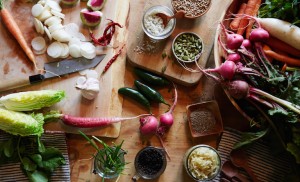
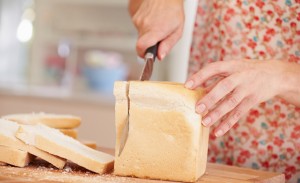



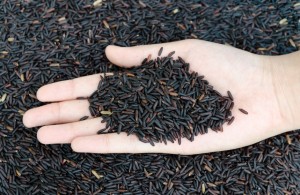

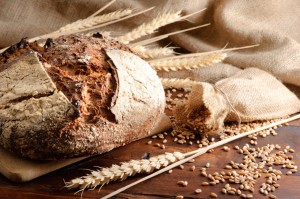
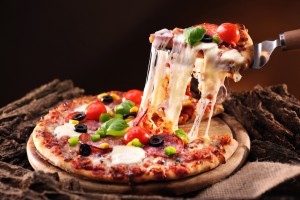


0 comments:
Post a Comment